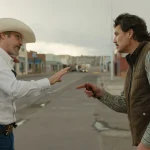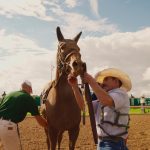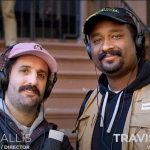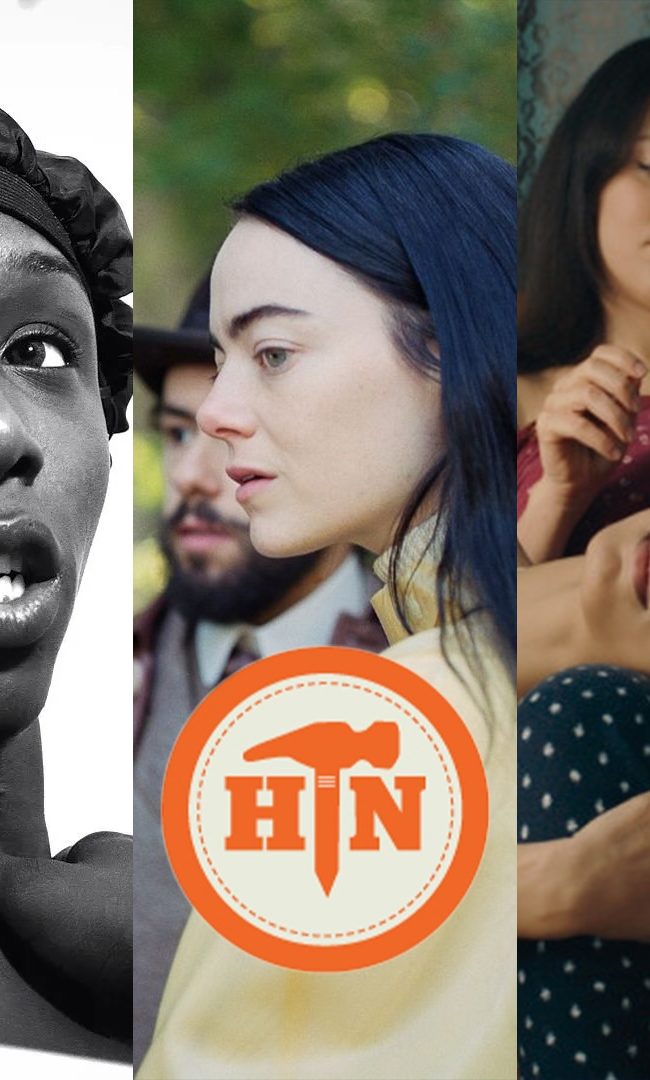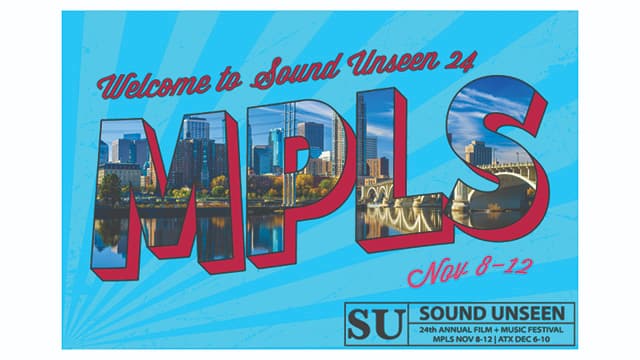A Conversation with Sam Green (32 SOUNDS)
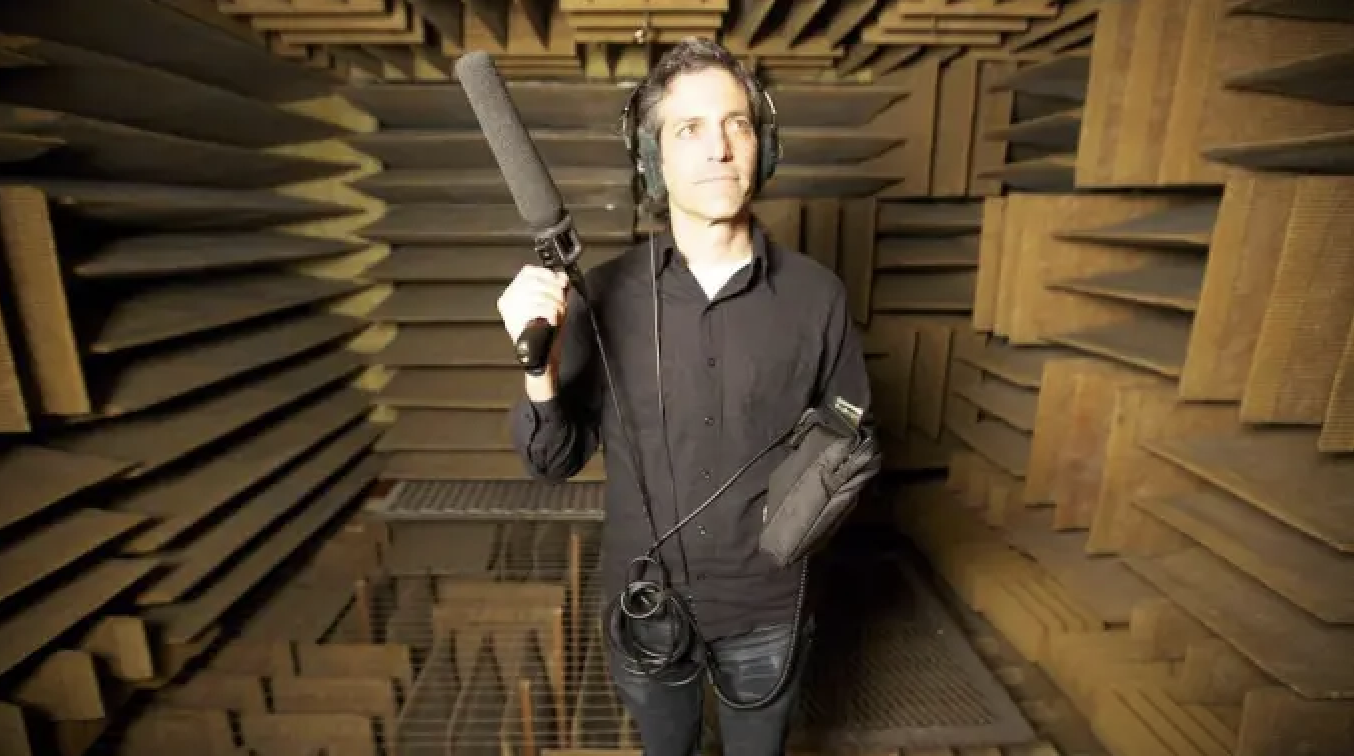
If a tree falls in the woods and no one is there to hear it, does it make a sound? In the fantastic 32 SOUNDS, the answer is: possibly? Or is the sound that you hear the actual sound or a simulacrum of the sound? A sound more real in its recreation than the actual sound itself?
Sam Green, formerly of the Midwest [East Lansing, Michigan], long-time Bay Area [San Francisco, California] resident, presently located (for the past decade-and-a-half) in the Northeast [Brooklyn, New York]. In that time, he has arguably made the most compelling non-fiction films of the late-‘90s, early-aughts and up to the present: THE RAINBOW MAN / JOHN 3:16 (1997), THE WEATHER UNDERGROUND (2003) with Bill Siegel, UTOPIA IN FOUR MOVEMENTS (2010) with Dave Cerf, the Esperanto exposé THE UNIVERSAL LANGUAGE (2011), along with a handful of “live cinema” performance pieces, THE LOVE SONG OF R. BUCKMINSTER FULLER (2012) with Yo La Tengo, A THOUSAND THOUGHTS (2018) with the Kronos Quartet and now 32 SOUNDS (2022) with JD Samson [Le Tigre, MEN, etc.].
“Now” for a film that premiered at Sundance in January of the previous year? After making the ‘rounds of the assorted collaborating (co-funding) institutions and elsewhere, 32 SOUNDS arrives at Film Forum in a traditional release, albeit with headphones for certain screenings, and elsewhere thereafter. It is the first of the “live cinema” works to get the theatrical treatment, befitting a documentary—arguably the filmmaker’s greatest work thus far—that aptly deserves an opportunity to be seen by a far-wider audience.
Why thirty-two? A not-so-oblique reference to the great 32 SHORT FILMS ABOUT GLENN GOULD which, itself, is connected to the Goldberg Variations (of which Gould arguably made the definitive recordings of the J.S. Bach theme-and-variations). By implication, it illuminates a documentary that would be composed of short sequences, thirty-two in total, although not always numbered. Where does one begin, sound-wise? At the beginning: the sound from inside the womb, recorded by Aggie Murch (wife of the first-credited “sound designer” and film editor and Curzio Malaparte translator, Walter Murch). Sound 1.
Hammer to Nail: I said you’d be hearing from me, mysteriously…
Sam Green: I know. I’ve been like looking over my shoulder, walking down the street.
HtN: Something is happening and you don’t know what it is.
SG: Jonathan, you’re on top of a huge mountain on Venus or Mars or something…
HtN: That would be SOLARIS in the background. You know, a “thinking planet” seemed an appropriate location for a call at this moment. I may be the only person with whom you’re speaking today who has seen 32 SOUNDS twice in different iterations. Once with JD Samson [at the Castro Theatre]. Once with you, solo [at the Green Music Center]. The one thing that occurred to me, both times, was how the film is something of a Green “Greatest Hits” collection. You found a way to work in just about every one of your films at some point or another, especially like the “room tone” sequence.
SG: That was like, “Okay, I can just scrape barrel…” there.
HtN: I mean, it works. It’s effective. But I was thinking a bit about this transition from a “performance piece” to the version of 32 SOUNDS that will screen at Film Forum and elsewhere. How do you take what is in your brain and say, “This works this way in this setting and it is now going to work this other way in another.” In the trailer, you and JD are in the midst of an introduction and, presumably, that introduction is part of the theatrical experience. That is one way in which you take the performative piece and transition into…
SG: I’ve made all of these other “Live Cinema” pieces and people would often say, “Why don’t you make it into a regular movie?” With the Kronos Quartet, for example, one of the reasons that movie works is because they are there. You’re learning about the Kronos Quartet and they’re sitting in front of you and there’s a kind of charge that comes from that. Or Buckminster Fuller and Yo La Tengo. I was always struck by when they come out, people are psyched, you know? They have fans, so just recording them is a totally different movie. A totally different experience. This was the first time that it [a theatrical version] seemed doable. After we did a bunch of shows at BAM [Brooklyn Academy of Music], Mike [Maggiore] from Film Forum wrote and said, “Would you send me a video?” I just sent him the version that is the words and the music and the images put together, which I have.
He wanted to show it and that made me wonder if this could work as a regular film? I talked to Mark Mangini, the sound designer, and we had really made the experience for headphones. There are a lot of reasons for that [such as the binaural sequences]. He said, “Well, there are a lot of things that can be better with speakers. Couple things that won’t be as good, but it works, you know?” I’m interested. One of the challenges of “live cinema” is that you’re constantly running across people who ask, “When can I see that Kronos Quartet movie?” And I’m like, “Well, if, if you’re gonna be in Berlin on May 16th…” but this is a different way to have something exist in the world.
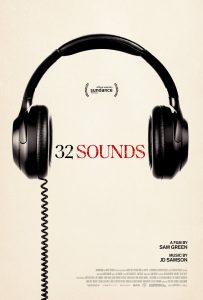
HtN: You’re not a stranger to that, obviously. You’ve made those kinds of films before! It is really just a process of taking something that is intended in one way and then rethinking about the way people are going to experience it another setting. However, Film Forum will have the headphones…
SG: For one show a day! Other shows will just be the speakers. That is interesting, too. It is curious, Jonathan, since you saw it in a room where, during the dance section, people got up and walked around and I don’t think that will be the same in a movie theater. I am hoping that one weirdo might get up and move around and everybody will be frustrated but it is harder in a room with people. You can sort of shape people’s experience and even control them to some extent. When you put a movie out in a theater, you don’t really know what is going to happen. It is interesting. I’m curious about it.
HtN: I would note that the experience of seeing it at the Castro, people danced [during that scene]. It became a dance party for that particular moment. Yet seeing it at the Green Music Center, people… it was a much different kind of subdued experience. In a way, you set it up in a more subdued way. “Come up here and touch the speaker,” you know?
SG: People got up there. It is different when JD is there. It is more of a “party DJ” scene.
HtN: Right. In the introduction for the “theatrical version” (if we want to call it that)… It is the two of you, together…
SG: Yeah.
HtN: “Hey, we created this thing. Now you’re going to get to experience it.” The rest of your narration doesn’t change. I mean, it’s largely the same [as the “live cinema” version] throughout the rest of the film. Yet it is particularly interesting seeing on-stage and it is difficult for me to imagine not seeing you there. Granted, I don’t know to what extent the prior knowledge of you and your work colors all of this because we already know each other. Our combined experience together predates all of this.
SG:Exactly.
HtN: “There is Sam doing his thing.” That’s great. But how does an audience who has no idea who Sam Green is interact with that? By having you introduce the film, the notion is, “I see who this guy is and now he is going to take me on this journey into sound.” You go to some very personal places that are affective in a live setting that may be harder for people to connect to in this “Voice of God” version.
SG: When we were thinking about how to make this into something that works as a regular movie—by that I mean a non-live movie—at first we thought, “Well, what if we film a live show and sort of cut back and forth?” I think the Beastie Boys did a live documentary where they did that [with AWESOME; I FUCKIN’ SHOT THAT!]. Then it felt that if you show somebody at the beginning—and you alluded to this—you see their face and you create a relationship with this person that you do not see after that. If you hear them, you are imagining that person. You don’t need to see them anymore, in some sense. That is what it is. It is a small intro and then you don’t see me again.
HtN: Good to know that, outside of the new introduction, you didn’t add any additional footage of you. Although, there is an existing scene, obviously, with JD playing “together” in a twofer, split-screen. That is an interesting moment, especially when JD is on-stage as well. It creates a somewhat disorienting experience. You had made as earlier film with Annea Lockwood [LEARNING TO LISTEN] and I’d wondered if those scenes with her in 32 SOUNDS came from that project or, as I presume, did the shorter piece derive out of the making of 32 SOUNDS?
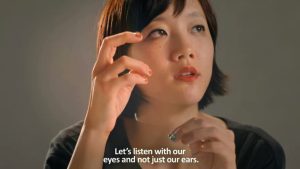
A still from 32 SOUNDS
GREEN: That piece came from the making of 32 SOUNDS. At some point I was working on 32 SOUNDS and a Scottish music festival [Counterflows] was doing a spotlight on her work and they said, “Would you make a five minute movie about her out of the material you’re accumulating?” And I said, “Sure.” I thought I’d do it in a weekend but I ended up spending a whole month making something that is thirty-five minutes long. A lot of the things that I made for the short piece about Annea Lockwood ended up in the 32 SOUNDS. It is kind of like the way someone would make a sketch for a painting or something like that.
HtN: It is a great companion film for 32 SOUNDS, too. They’re very different from each other. Was it always clear to you in constructing 32 SOUNDS that she would bookend the film? She thinks about sound in a rather unique way, different from most composers. Although many of the individuals you include also operate in a similar space.
SG: With the Kronos Quartet movie, I learned a lot about the sort of scene of avant garde composers from fifties, sixties and seventies. You know, John Cage, Pauline Oliveros… Those people are incredibly smart. I think about sound and music and the differences and similarities… The porous borders between those two things. Annea Lockwood comes out of that world, even though she is a little broader than that. She was someone I connected with very early-on during the pandemic. I came across a reference to her [in a book about Pauline Oliveros]. I started Googling her. I’d never heard of her but I was very taken with her work. I wrote her an email and said, “Could I talk to you sometime?” And she said, “How about this afternoon?” We just struck up a… back in those days, when nobody was doing anything, you could do that, right? We talked and talking to her—that ongoing conversation—really shaped the film. Then I went and filmed with her and a light turned on. I felt like she was a good throughline for the movie. She spanned a lot of things and she is just a genuine pleasant person. It is the only movie I’ve made where, from very early on, I knew where I wanted to go. Sitting on her back-step and listening to the sound of the crickets [spoiler: Sound 32]. It was just an effort of how to make a movie that can get to that place and have it work? It was like coming up with a punchline and then trying to think of a joke that will make that punchline work.
HtN: Everything leads to that moment. I mean, with her dealing with the loss of [composer / companion] Ruth Anderson. The subtext of 32 SOUNDS is the audio cassettes you found. As we discussed after the Castro screening, we share a similar experience with our brothers [and their early passing]. Some of that obviously comes out of the feelings that we were experiencing in the pandemic. In essence, 32 SOUNDS is dealing with the pandemic in its own way. I have seen far too many films in recent months that deal with the pandemic and it is almost always the same routine. You’re dealing with it without addressing the issues head-on. You’re seemingly saying [or I am projecting] that this is a profound moment where we can learn something about the ways we engage with the world and the ways we hear the world around us. Let this not be a lost opportunity to think about everything in a new way. Even though 32 SOUNDS is supposedly about those assembled sounds, it is about something much larger. It is about the way we live in the world and the ways we experience the world around us.
SG: I’d had that thought recently and I’m surprised that I never thought of it earlier but it is a total pandemic movie. I mean, I made it entirely during the pandemic and all of that is infused in the film. It couldn’t not be. I mean, it is funny to me that we still haven’t had a moment, societally, of, “That was fucked up!” You know? I think, after World War I or even the Civil War, it took many years before people were willing to look back and started putting up monuments and processing it all. I think we’re still in that stage where we’re like, “It’s over and I’m only looking forward.” What pandemic, you know? But it is true. I agree with you. It is very much a film shaped by and, in some ways, about that experience.
HtN: About the absences. About the people we know that we’ve lost prematurely. The things that we’ve lost. It does seem strange to me (although not altogether surprising) that we are at this moment where many folks are pretending that it never happened at all. “Let me just jump right over that.” Yet we have people that we know that we lost. We have to deal with that in some way.
I was particular curious—apologies, just rushing through these thoughts given our limited time—about your process of collaboration. Particularly when you have a film that is specifically about sound, how do you collaborate differently here than with other projects? With Yo La Tengo, seemingly they do what they’re otherwise doing. An easier lift, perhaps. But 32 SOUNDS, the score is obviously more immersed in the threading of the tale. When you use, as a reference point, the Glenn Gould film [32 SHORT FILMS ABOUT GLENN GOULD], you’re already establishing that these will be vignettes and that each of the thirty-two sequences are going to be addressed in somewhat different ways. How did you work with JD Samson on putting the whole soundtrack together? Presumably, you want to be relatively hands-off but you also need to think about where you’re going?
SG: In some ways, if you have a film that is about a main character or a narrative or a plot-heavy film or one that involves a conflict, all of those devices allow you to put something together and, in a way, you can lean on those. This is a film that is much closer to music than any film I’ve made. Right? I have this quote… [goes to the wall in the background, pulls down an index-card] …I’ve had this on my wall for many years. I’ve dragged it around the world with me. I don’t know if you can read it. It is a Stanley Kubrick quote [“A film is—or should be—more like music than like fiction. It should be a progression of moods and feelings. The theme, what’s behind the emotion, the meaning, all that comes later.”]. It is all about how film should be like music. I kept this around with the Kronos movie and I aspired to that. But I am a documentary filmmaker. I went to journalism school. I’m from the Midwest. You know, there is a certain amount of “literalness” in my being. I’ve tried to be musical and sort of succeeded with Kronos.
But with this… I think, because there is no other way of putting it together, it is like a piece of music in a way where things like rhythm and energy and texture… that is what makes the movie. With composers writing music, they don’t have character or narrative plot. It has to hold together energetically and rhythmically and melodically. Working with JD was a matter of, in the beginning, “JD, do your dance thing. Let’s get that energy out there.” Then, with the Charles Babbage, it has to be beautiful and slightly yearning but it can’t be too big. These are just those weird ways you try to describe what is necessary. Many times, JD would make a piece… the way JD works is, I’d say, “How about something for this?” And she’d make like nine things and sometimes I’d say, “Oh my God, this is great but how about here?” It is a funny, slippery, organic [process]… I always love that because I love musicians. I love that musicians work in such a different way than filmmakers. It is always fun to try to sync-up those two ways of working.
HtN: It is one of the aspects that is truly engaging more-so than just about any other film that tries to deal the mysteries of music and sound. To circuitously return to an earlier notion, if this is Green’s “Greatest Hits” it also includes “Future Hits” as well. Because you even include moments from films that don’t yet exist! Such as the “oldest person in the world” where you have footage from this long-in-the-works forthcoming release. When you say you knew how 32 SOUNDS was going to end from the beginning, how is “oldest person in the world” project going to end? How do you end something that literally has no ending?
SG: The oldest person in the world. That is such a great question. I always like how the form of a film can come out—and should come out—of the material. If you finish a film about the oldest person in the world, within one year, it is out-of-date. Like that, exactly. It can’t work. It can only be an endless film. In about four years, I’ll make an iteration of it. I’ll put out a version of it but then, six years after that, I’ll have to do another version. It’ll get longer and it’ll change and it’ll just keep going. Who knows, maybe I’ll die and somebody else will take it over? [Not unlike Patrick Shen and Brandon Vedder’s forthcoming fascinating FILM1 / ASAP (AS SLOW AS POSSIBLE).]
It can’t be a film that ends. It wouldn’t make any sense.
32 SOUNDS (2022)
dir. Sam Green [98min.] Abramorama
— Jonathan Marlow (@aliasMarlow)

